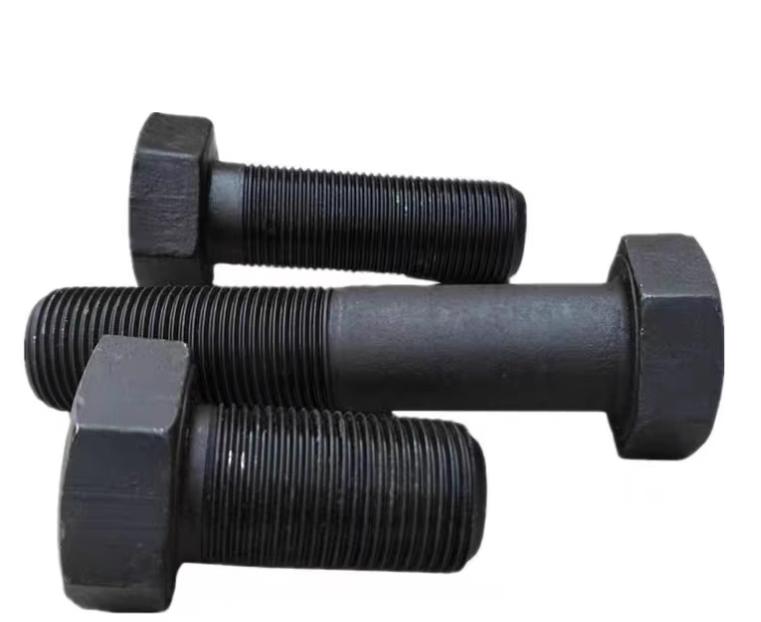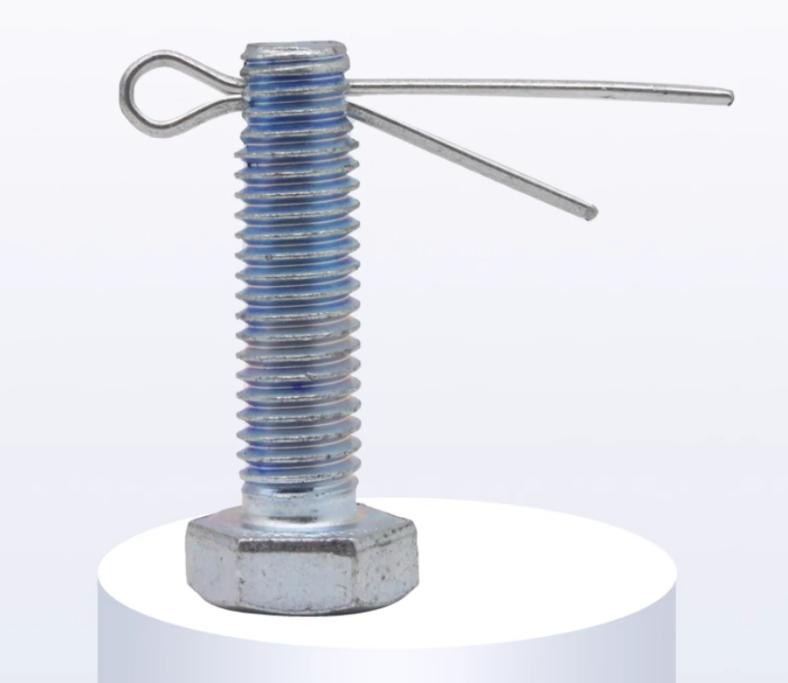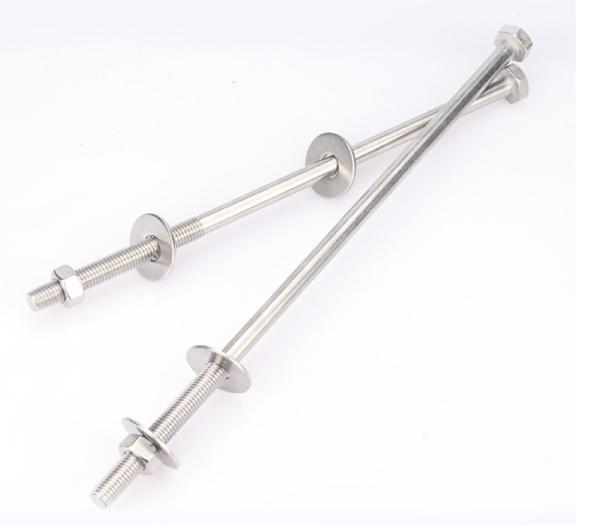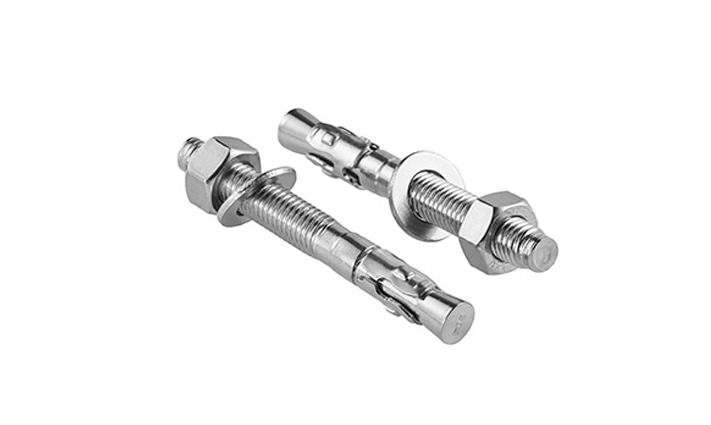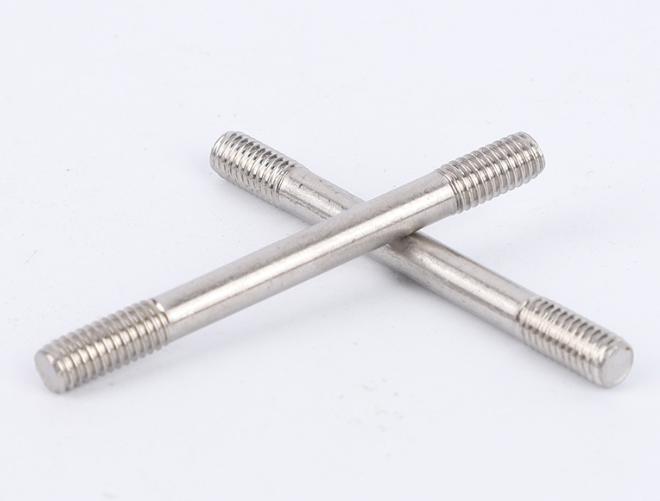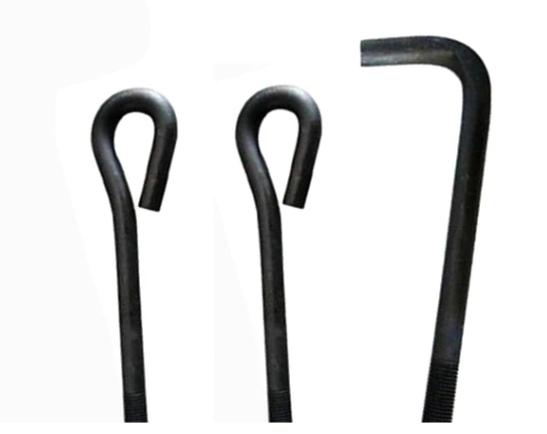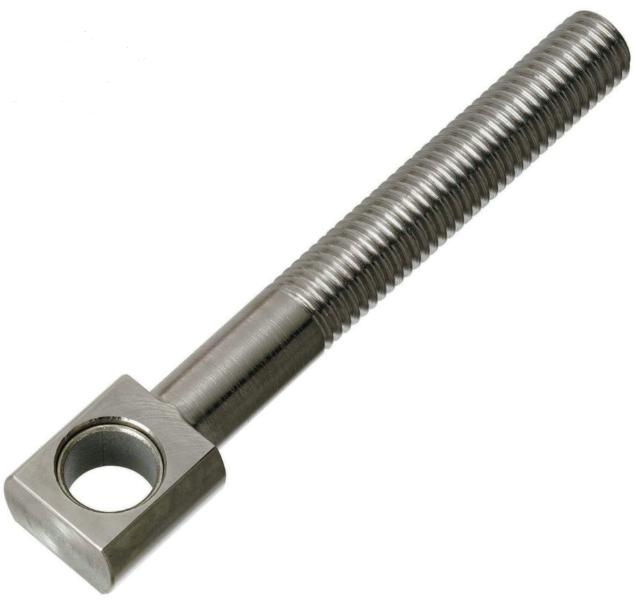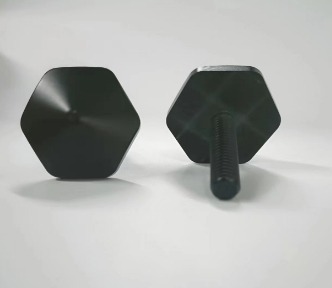Exploring the Types of Concrete Anchor Bolts and How to Use Them
When working with concrete, one of the most crucial aspects is ensuring a secure connection for objects like beams, pipes, or machinery. This is where anchor bolts come into play. These specialized fasteners provide a reliable way to attach various elements to concrete structures. But with a variety of anchor bolt types available, choosing the right one for your project can be critical. This guide dives deep into the world of concrete anchor bolts, explaining their different types, installation methods, and factors to consider for optimal selection.
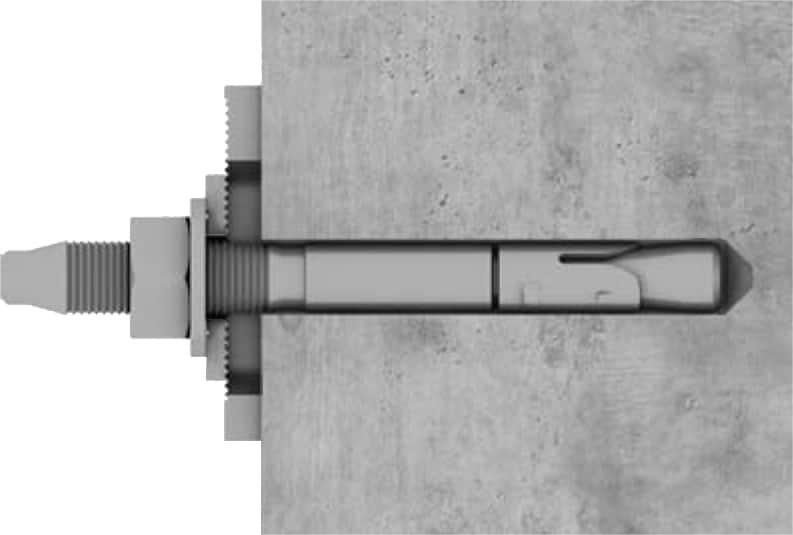
What is Concrete Anchor Bolt?
Concrete anchor bolts serve as threaded metal fasteners specifically designed to be embedded into concrete surfaces, offering a robust attachment point for various objects. Unlike standard bolts, they exhibit distinct characteristics:
- Material: Typically crafted from high-strength steel, concrete anchor bolts ensure maximum load-bearing capacity suitable for anchoring heavy objects or structures securely.
- Thread Length: The threaded section of anchor bolts is typically elongated compared to standard bolts, facilitating deeper embedment into the concrete substrate for enhanced stability and strength.
- Expansion Mechanism: Unlike traditional screws relying on thread friction, anchor bolts employ an expansion mechanism to firmly grip the concrete. This mechanism, often achieved through wedges or sleeves, expands within the drilled hole as the bolt is tightened, creating a strong and secure attachment point.
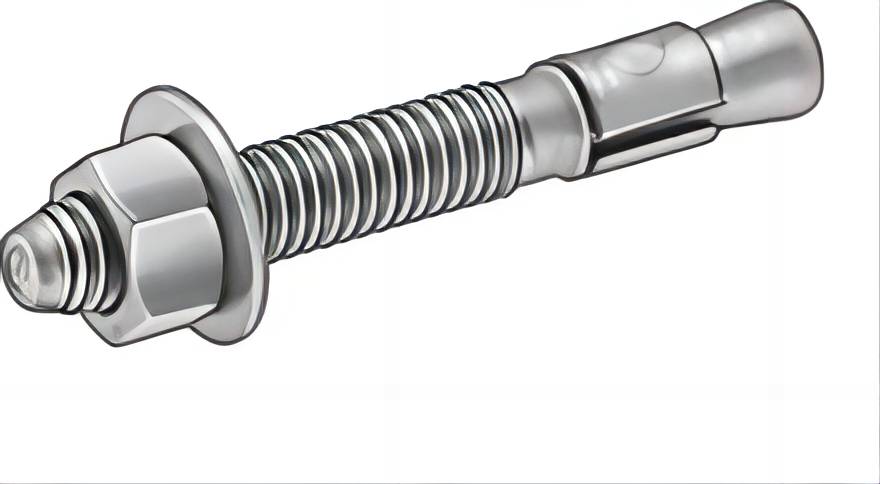
Types of Anchor Bolts for Concrete
The selection of the appropriate anchor bolt depends on several factors, including the weight and type of load the object will exert, the condition of the concrete (cracked or uncracked), and the intended application (indoor or outdoor). Let’s explore some of the most common types of concrete anchor bolts:
1. Wedge Anchors:
Wedge anchors consist of two main parts:
- Threaded Bolt: This is a long, screw-shaped rod made from high-strength steel. It has threads along its entire length to allow for tightening with a wrench.
- Wedge Component: This is a separate piece, typically crafted from high-strength steel as well. It has a wedge shape at one end and a slotted opening on the other designed to fit the threaded bolt.
Wedge anchors are ideal for high-load applications due to their powerful holding capacity. When the bolt is tightened, the wedge mechanism comes into play. As you turn the wrench, the bolt threads pull the wedge deeper into the slotted opening, forcing it to expand outwards. This expansion creates significant friction between the wedge and the concrete walls of the drilled hole, anchoring the bolt firmly in place.
Applications of Wedge Anchors
Wedge anchors are suitable for securing heavy objects that exert significant pulling or shearing forces. Typical applications include:
- Structural columns supporting buildings or bridges
- Machinery bases for industrial equipment
- Heavy railings on balconies or staircases
Installation Method for Wedge Anchors:
- Drilling: Use a rotary hammer drill equipped with a drill bit matching the exact diameter specified by the anchor bolt manufacturer. Drill a hole straight into the concrete to the recommended depth indicated on the anchor packaging. This depth is crucial for achieving the optimal holding capacity.
- Cleaning: After drilling, thoroughly clean the hole using a brush or compressed air. Any dust or debris left inside the hole can hinder the wedge’s proper expansion and compromise the anchor’s grip.
- Inserting the Anchor: Insert the wedge anchor assembly into the cleaned hole, ensuring the threaded end of the bolt protrudes from the concrete surface.
- Tightening: Tighten the bolt using a wrench following the recommended torque value provided by the anchor manufacturer. The torque rating specifies the precise amount of rotational force needed to achieve the optimal expansion of the wedge and secure the anchor in the concrete. As you tighten the bolt, the wedge will expand within the drilled hole, creating a powerful frictional lock between the anchor and the concrete.
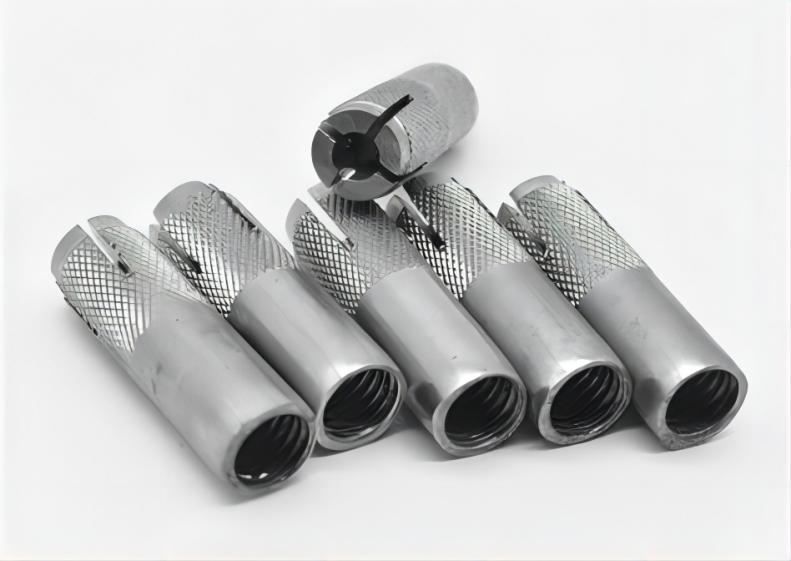
2. Sleeve Anchors:
Sleeve anchors consist of three primary components:
- Threaded Bolt: Similar to wedge anchors, sleeve anchors utilize a threaded bolt made from high-strength steel.
- Metal Sleeve: This is a hollow cylinder typically made from steel or a nylon material with high durability. The sleeve’s inner diameter is designed to fit snugly around the threaded bolt.
- Expansion Wedge: This is a separate piece, often made from steel, that fits within the sleeve and features a mechanism that allows it to expand outwards.
Sleeve anchors offer a good balance between holding strength and ease of installation, making them a popular choice for moderate-load applications. They perform well in both cracked and uncracked concrete due to their unique design. When the bolt is tightened, the expansion wedge within the sleeve is forced outwards, creating friction against the concrete walls of the pre-drilled hole. This friction secures the anchor in place and allows it to hold the attached object securely.
Applications of Sleeve Anchors:
Sleeve anchors are suitable for securing various elements to concrete in both commercial and residential settings. Examples include:
- Pipes carrying water, gas, or electrical wires
- Electrical fixtures like outlets or light switches
- Concrete slabs for countertops or shelves
- HVAC system components mounted on concrete walls or ceilings
Installation Method for Sleeve Anchors:
- Drilling: Using a rotary hammer drill, create a hole in the concrete with the exact diameter specified for your chosen sleeve anchor. Refer to the manufacturer’s instructions for the appropriate drill bit size.
- Cleaning: Just like with wedge anchors, meticulously clean the drilled hole to remove any dust or debris that might affect the anchor’s performance.
- Inserting the Anchor: Insert the sleeve anchor assembly into the prepared hole. Ensure the sleeve sits flush with the concrete surface, and the threaded bolt protrudes from the opposite end.
- Tightening: Tighten the bolt using a wrench. As the bolt tightens, the expansion wedge inside the sleeve will be forced outwards, creating friction against the concrete walls of the drilled hole. This frictional force secures the sleeve anchor firmly within the concrete.
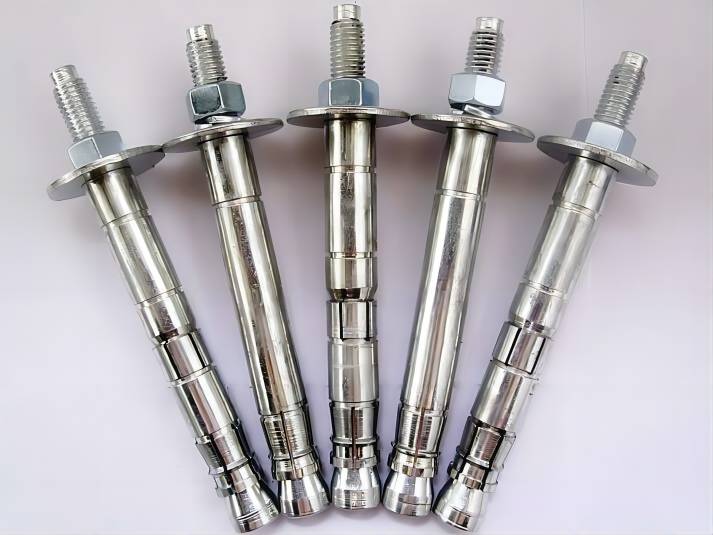
3. Hammer Drill Anchors:
Hammer drill anchors, also known as concrete screws, are one-piece anchors typically made from steel. They are designed for quick and convenient installations in concrete or masonry. Unlike the previous two anchor types, they don’t have separate components. The anchor itself houses an internal expansion mechanism.
Hammer drill anchors are ideal for securing lightweight objects that don’t require extremely high holding capacities. Their primary function relies on creating friction between the anchor and the concrete. During installation, hammering the anchor into the pre-drilled hole forces internal wedges or threads to expand outwards. This expansion creates a gripping force that holds the anchor in place within the concrete.
Applications of Hammer Drill Anchors:
Due to their limitations in holding strength, hammer drill anchors are best suited for lighter-weight objects and applications where a quick and easy installation is preferred. Common uses include:
- Cabinets and shelves mounted on concrete walls
- Light fixtures and electrical boxes secured to concrete ceilings
- Bathroom accessories like towel racks or toilet paper holders
- Decorative items with minimal weight hung on concrete surfaces
Installation Method for Hammer Drill Anchors:
- Drilling: Using a hammer drill equipped with the appropriate drill bit size specified by the anchor manufacturer, create a hole in the concrete or masonry to the recommended depth.
- Cleaning: Similar to other anchor types, ensure the drilled hole is free of dust and debris by cleaning it thoroughly with a brush or compressed air.
- Inserting the Anchor: Insert the hammer drill anchor straight into the cleaned hole. Push it firmly until the base of the anchor sits flush with the concrete surface.
- Hammering: Using a hammer or the hammer function on your drill, firmly drive the anchor into the pre-drilled hole until its head is completely flush with the concrete surface, or to the depth recommended by the manufacturer. The internal wedges or threads within the anchor will expand during hammering, creating a frictional grip on the concrete walls of the hole.
Important Note: Hammer drill anchors primarily rely on friction for holding power. They may not perform well in cracked concrete or situations where the object being secured experiences significant vibrations or movement. For such applications, consider using wedge anchors or sleeve anchors that offer superior holding capacity.
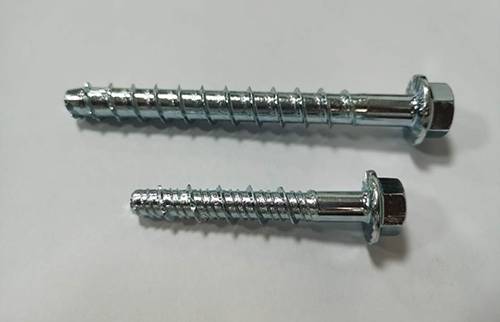
4. Other Anchor Bolt Types:
Apart from the commonly used anchors mentioned above, there are a few other types suited for specific applications:
- Stud Bolts with Adhesive Capsules: These anchors are ideal for high-load applications but require a chemical curing process. They consist of a threaded stud bolt bonded to the concrete with a special adhesive capsule. The adhesive requires curing time to achieve its full strength, typically ranging from several hours to a day, depending on the specific product. This curing time is a crucial factor to consider when using this type of anchor.
- Toggle Bolts: These anchors are specifically designed for use in hollow core concrete or masonry applications. Unlike the other anchors discussed, toggle bolts don’t require pre-drilled holes. They have a spring-loaded toggle mechanism that expands behind the concrete layer, creating a secure hold. Toggle bolts are suitable for lighter-weight objects and are not recommended for high-load applications.
- Ring Anchors: These anchors feature a closed loop at one end and a threaded section on the other. Ring anchors are embedded in concrete and allow for the attachment of cables, hooks, or other elements through the loop. They are commonly used for securing suspended loads or tie-down applications.
- Expansion Anchors with Bolts and Shields: This type of anchor utilizes a separate shield that expands within the drilled hole to create a gripping force. The bolt threads into the pre-installed shield, providing a secure connection. Expansion anchors with bolts and shields come in various materials and configurations to suit different load capacities and concrete conditions.
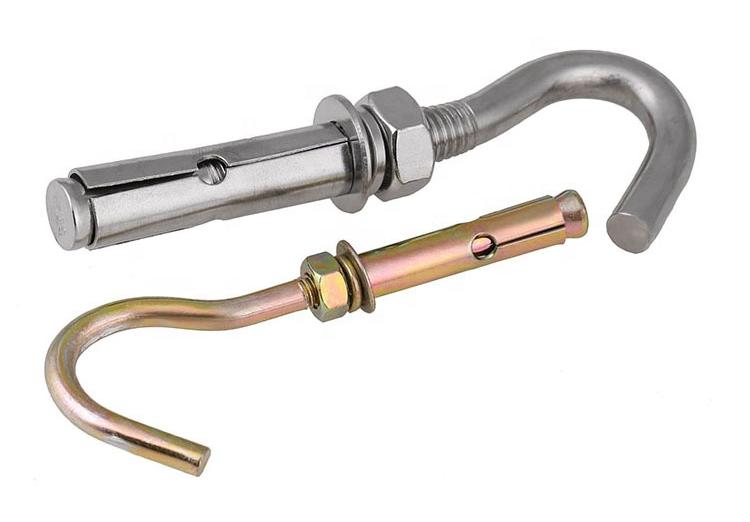
Tips for Choosing the Right Concrete Anchor Bolt
Selecting the appropriate anchor bolt for your project is crucial for ensuring a safe and secure connection. Here are some key factors to consider when making your choice:
- Weight and Tensile Load: The primary factor is the weight or tensile load (pulling force) of the object you are securing. Anchor bolts are rated for specific load capacities, so ensure the chosen anchor can handle the intended load without failure.
- Type of Concrete: The type of concrete, whether cracked or uncracked, plays a role in anchor selection. Some anchors, like wedge anchors and sleeve anchors, perform well in both cracked and uncracked concrete. However, anchors like hammer drill anchors may not be suitable for cracked concrete due to their reliance on friction for holding power.
- Indoor or Outdoor Application: For outdoor applications, consider the anchor’s corrosion resistance. Zinc-plated or stainless steel anchors are better suited for exterior environments to prevent rust and ensure long-term performance.
- Base Material Thickness: The thickness of the concrete base where the anchor will be installed is also important. Some anchors require a minimum concrete embedment depth to achieve their rated capacity.
- Ease of Installation: Consider the installation method and tools required for each anchor type. Hammer drill anchors offer a quick and easy installation, while wedge anchors or adhesive anchors may require more specialized tools and a bit more time for proper installation.
Safety Precautions When Installing Anchor Bolts
Always prioritize safety when working with anchor bolts and concrete. Here are some essential precautions to follow:
- Wear appropriate Personal Protective Equipment (PPE): Safety glasses and gloves are essential to protect your eyes and hands from flying debris or sharp edges.
- Use the Correct Drill Bit: Ensure the drill bit diameter matches the recommended size for the chosen anchor bolt. Using an incorrect size can compromise the anchor’s holding capacity.
- Follow Installation Instructions: Each anchor type has specific installation instructions provided by the manufacturer. Carefully follow these instructions to ensure proper embedment depth, tightening torque, and overall installation procedure.
- Use a Torque Wrench for Tightening: For anchors requiring a specific tightening torque, utilize a torque wrench to ensure proper bolt tension and achieve the optimal holding capacity.
- Clean the Drilled Hole: Before inserting the anchor, thoroughly clean the drilled hole to remove any dust or debris that might hinder the anchor’s expansion and grip within the concrete.
- Use Anchors Within Their Load Capacity: Never overload an anchor bolt. Always choose an anchor rated for a higher load capacity than the actual weight or pulling force it will experience.
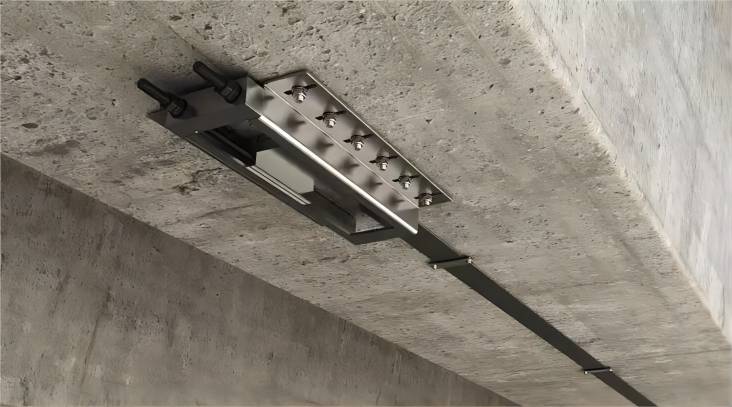
Conclusion
By understanding the different types of anchor bolts, their installation methods, and the key factors for selection, you can ensure a secure and reliable connection for your project in concrete. Remember to prioritize safety by following proper installation procedures and using the right tools and equipment. If you have any doubts or are unsure about the appropriate anchor bolt for your specific application, consult a professional or refer to the recommendations provided by the anchor bolt manufacturer.

